Recent Articles
Popular Makes
Body Types
2016 Kia Soul Road Test and Review
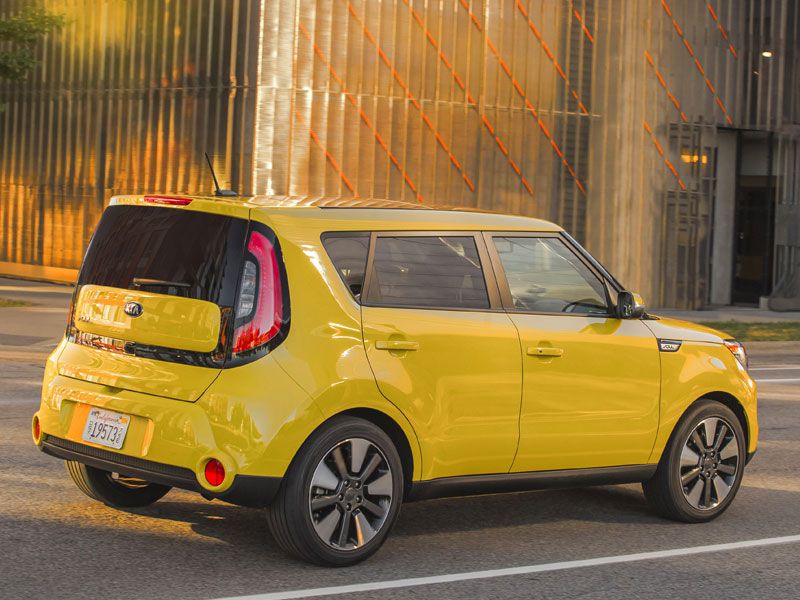
2016 Kia Soul rear view ・ Photo by Kia
It wasn't too long ago that box-shaped cars were all the rage, but now the Nissan Cube and Honda Element are gone and the Scion xB is about to join them on the road to automotive oblivion. That leaves just one boxcar on the market: The Kia Soul. Fortunately, it happens to be one the best of the bunch—a car that is practical, attractive, and delivers good value for the money. Read through our entire road test and review to discover more.
The Eternal Soul
Box-shaped cars were originally designed as fashion statements, and the Kia Soul still stands out. Its squared-off shape makes it get noticed in parking lots full of jelly-bean-shaped sedans and rounded-off SUVs. Kia first introduced the Soul in 2008 (remember those clever hamster ads?), and when the Korean company gave it a re-do in 2014, it followed the same formula; the 2016 Kia Soul is, at first glance at least, nearly identical to the 2008 version. We see that as a good thing: If you like to keep your cars for a while, you want styling that is going to age well. As long as other automakers continue to be slaves to aerodynamics—something ever-rising fuel economy regulations will demand—the Soul will continue to look fresh, new and different for some time to come.
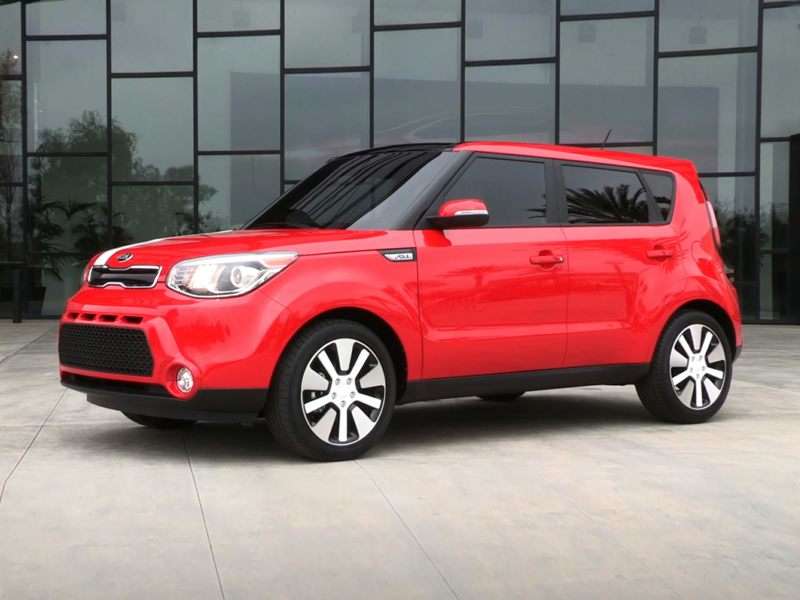
Photo by Kia
How Much Room Is In Your Soul?
Styling may be the Kia Soul's unique selling proposition, but it isn’t the key to the car’s success. What we like best about the Soul—and we imagine most owners would agree—is how practical it is. There’s a reason that boxes are shaped like boxes: A cube is an incredibly efficient packing space, and with its squared-off roofline, the Soul makes a fantastic packing crate—better than many SUVs and wagons which, in the interest of aerodynamics, have swoopy rooflines that eat up cargo space.
The Soul offers a useful 18.8 cubic feet of luggage room, and while you wouldn't want to pack it to the rafters (objects above the rear seats can become head-smashing projectiles in a collision), there's plenty of space for groceries and suitcases with the rear seats in place, though one needs to think vertically (stand those suitcases on end) rather than horizontally as with a traditional car trunk. There's an additional 5.4 cubic feet of space in a hidden compartment under the floor, a great place to stash your stuff when parking in places where one doesn't want to tempt opportunist thieves. Folding down the back seats opens up a generous 61.3 cubic feet, good for those long days of antique hunting.
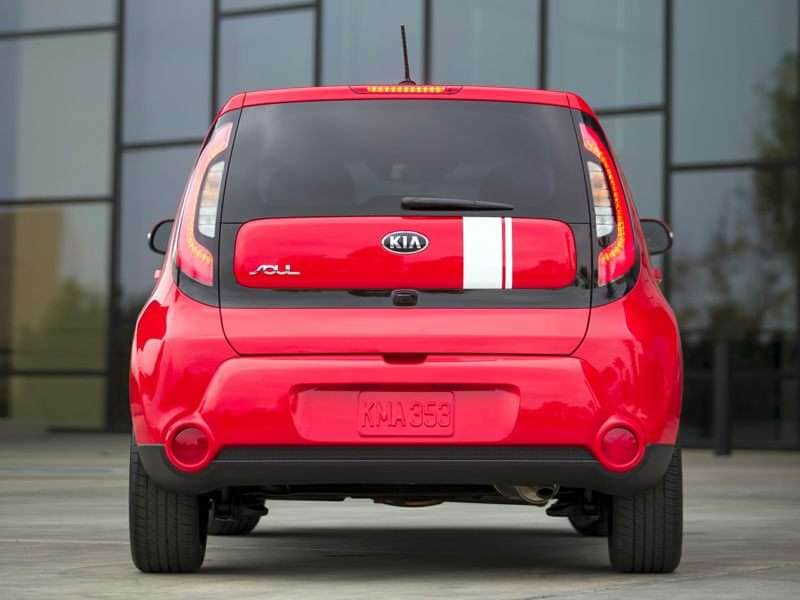
Getting Comfortable In Your Soul
The Kia Soul’s shape pays dividends to back-seat passengers as well. There’s no need to bend low when you get in; the Soul allows its back-seat passengers to retain their dignity and sit up nice and tall, just like Mother told you to do at the dinner table. With lots of headroom and adequate legroom, the Soul provides back-seat accommodations comparable to a small SUV--not bad considering that this Kia is really a subcompact car.
Front seat accommodations are good as well: There's plenty of headroom and the big windows combine with generously sized sideview mirrors to provide excellent all-around outward vision. If you have a pet peeve for cars with gun-slit-sized windows--and there are too many of those around nowadays--you'll like the Soul's sightlines, as well as its boxy shape and truncated rear end, which make it easy to squeeze into small parking spots.
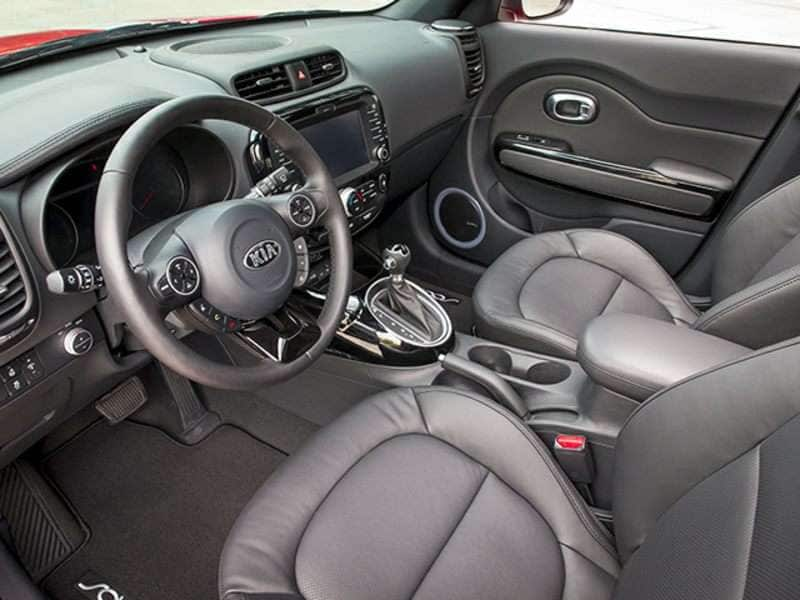
Looking Inside Your Soul
One of our favorite aspects of the first-generation Kia Soul was its interior styling. The current car has been toned down a bit; you can no longer get houndstooth seat fabric, which is a bummer, and the cabin of the least-expensive model (Soul Base) is a bit dreary. Our favorite interior comes in the mid-level Soul + (yes, they use symbols rather than names for trim levels; this is what happens when you don’t let your marketing department get enough fresh air), a much cheerier place with two-tone black-and-gray seat and interior trim, though you can still go monochrome black if you are so inclined.
The Soul + also gets bright trim to highlight the rounded-off shapes of the instrument and switchgear pods, as well as a touch-screen stereo that runs Kia's easy-to-use UVO software. Pop for the top-of-the-line Soul ! (Kia apparently refers to it as the Soul Exclaim) and you're back to monochrome black, albeit with leather rather than cloth under your posterior. You'll get some visual relief with the $1100 Umber Package, which changes the seat color to brown (sorry, umber) with matching trim on the doors. Both + and ! models offer an interior lighting package with multicolor LEDs that surround the door speakers and pulse in time with your music. It’s a great way to add visual interest to the Kia Soul's cabin, and it's good fun too--well worth the $450 asking price.
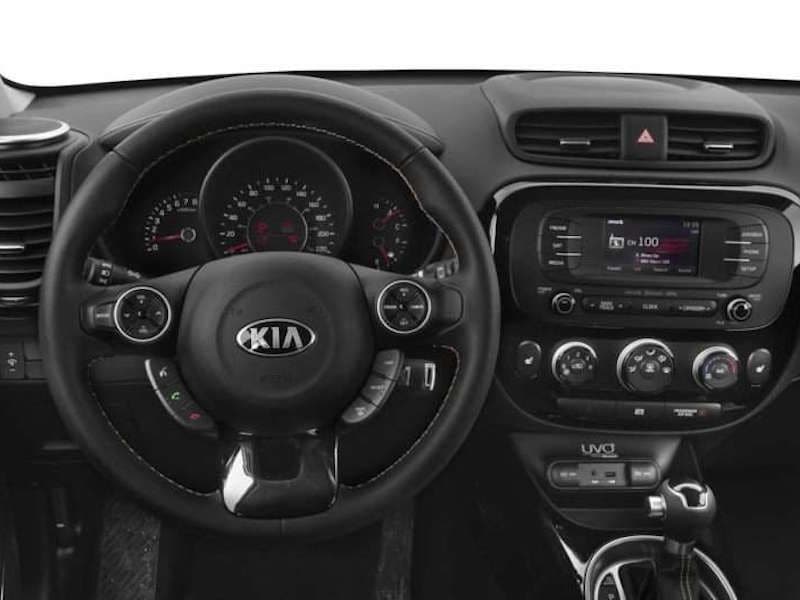
Power To Move Your Soul
The 2016 Kia Soul Base comes with a 130-horsepower 1.6-liter inline-4 and a six-speed manual transmission (an automatic is optional). The Soul + and ! models get a 164-horsepower 2.0-liter 4-cylinder and an automatic transmission. Despite the 34 horsepower difference, real-world acceleration from both engines feels about the same: reasonably quick but not mind-blowing. Believe it or not, EPA fuel economy is better with the bigger engine: 24 mpg city and 31 mpg highway, versus the 1.6 at 24/31 with either the manual or automatic transmission. Blame the Soul's boxy shape for the lousy highway figures; most subcompact cars are rated in the mid-to-high 30s.
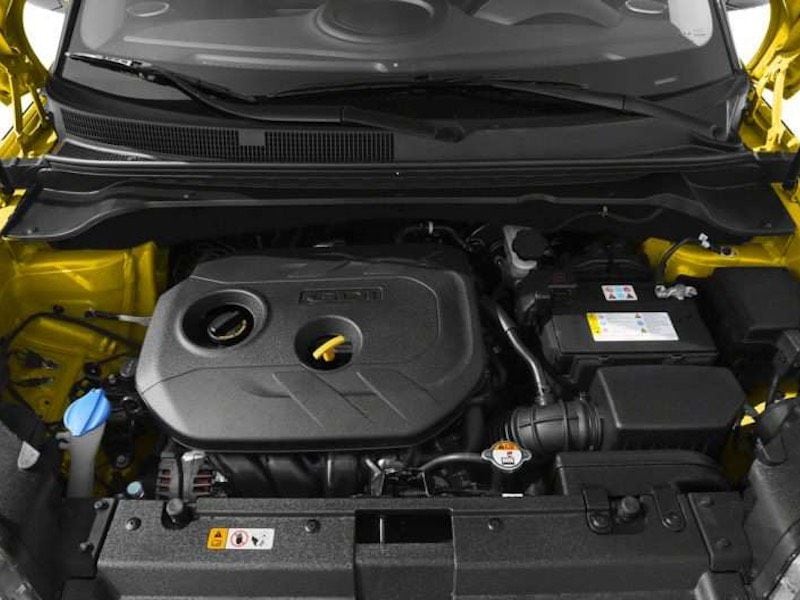
The Soul of the Environment
Mid-level Soul + models offer an Eco package with low-rolling-resistance tires and an start/stop system that automatically shuts down the engine at stoplights and restarts it when the driver takes her foot off the brake. The Eco package has no effect on EPA fuel economy figurese, but killing the engine when it’s not needed reduces pollution and does save some fuel.
As one of the more ecologically minded Autobytel experts, I feel it's $500 well spent. Of course, if you really want to go green, consider the all-electric battery-powered Kia Soul EV. Its EPA-rated range is 90 miles, and it’s compatible with the popular ChaDeMo quick-charging system as used by the popular Nissan Leaf.
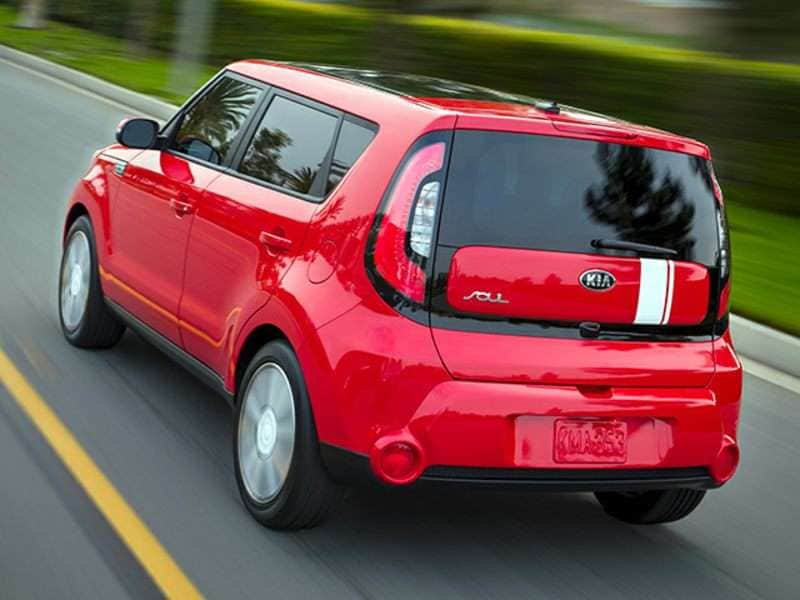
A Small Soul that Feels Big
We're impressed by the way the Kia Soul goes down the road. Most inexpensive cars make some compromises in ride and handling, but the Soul drives like a much pricier vehicles: Its ride is smooth, composed, and surprisingly quiet. Road-holding is quite good, too; the Soul is happy to be flung around the corners with verve. But the steering is a bit of a disappointment: The Soul comes with Kia’s FlexSteer system, which lets the driver choose from three settings (Comfort, Normal, and Sport), which dictate how much effort is needed to turn the wheel. Unfortunately, there’s not much feedback or precision; on-center feel is poor, and the Soul has a tendency to wander a bit on the highway. Kia has developed a better steering system for other cars, but it has yet to be fit to the Soul.
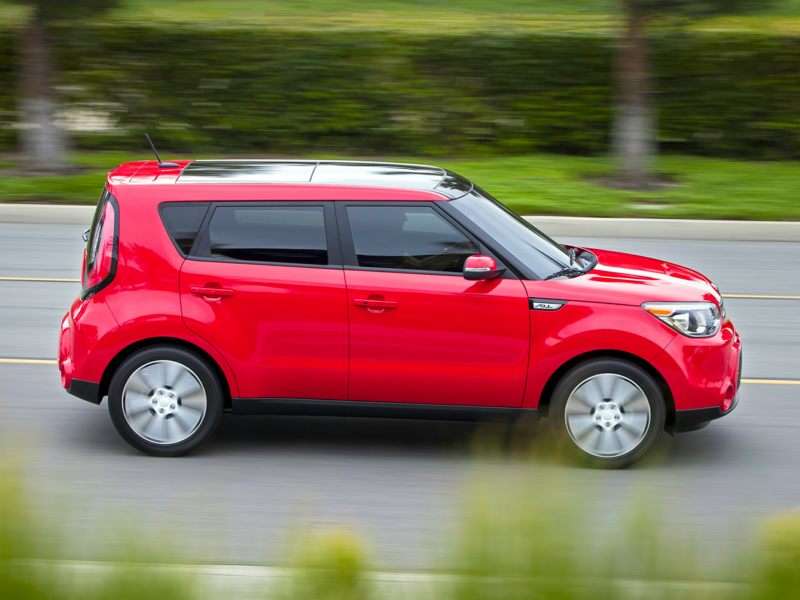
Photo by Kia
How Safe Is Your Soul?
The Kia Soul comes with six airbags: two in front, one in each of the front seats, and full-length side curtain airbags. Electronic stability control is standard and a backup camera is optional on the base model and standard on others. As for high-tech advanced safety systems, the Soul is behind the curve: It offers lane departure and forward collision warning systems, but only as options on the top-of-the-line Soul ! Despite the lack of sophisticated hardware, the Soul's crash test scores are excellent: It rates a full five stars from the US government, and the Insurance Institute for Highway Safety (IIHS) gave the Soul a Top Safety Pick rating thanks to its best-possible scores in all five of its crash tests, including the difficult-to-pass small overlap crash.
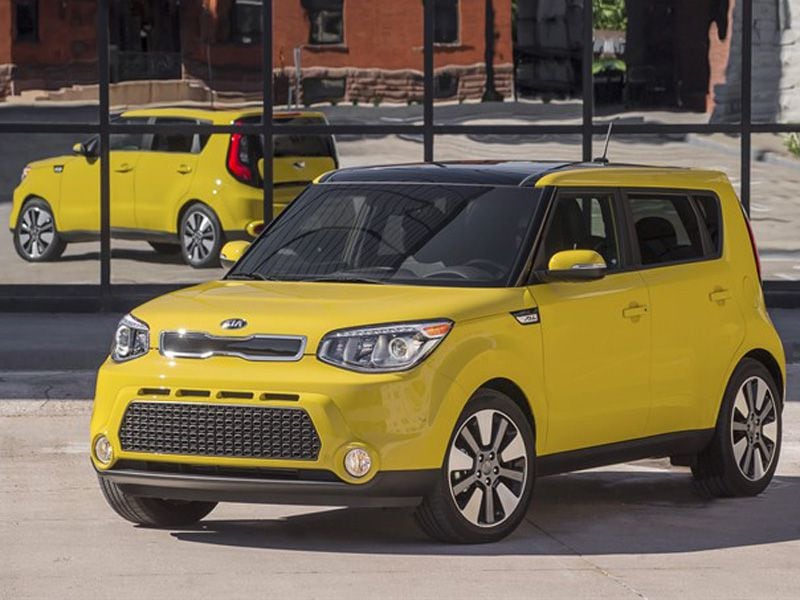
Photo by Kia
The Price of Your Soul
With a starting price of $16,750 ($15,900 plus an $850 destination fee), the Kia Soul Base is one of the least expensive cars you can buy. It's not badly equipped--power windows, locks and mirrors are standard, as are air conditioning and Bluetooth phone connectivity, although cruise control isn't offered and color choices are limited to white, black, silver or yellow. The only option for the Soul Base is an automatic transmission, priced at $1500.
The $20,250 Soul + is a much better proposition: It gets cruise control, alloy wheels, an automatic transmission and a better stereo, plus access to more options. It also gets the full color palette, including orange, green, and two lovely shades of blue. For $500 more, Kia will give you a red Soul + with a black roof or a white car with a red roof. The Soul ! lists for $22,150, a good deal considering its leather interior. Pop for all of the options, and the Soul’s price can rise to a lofty $27,550, plus dealer accessories.
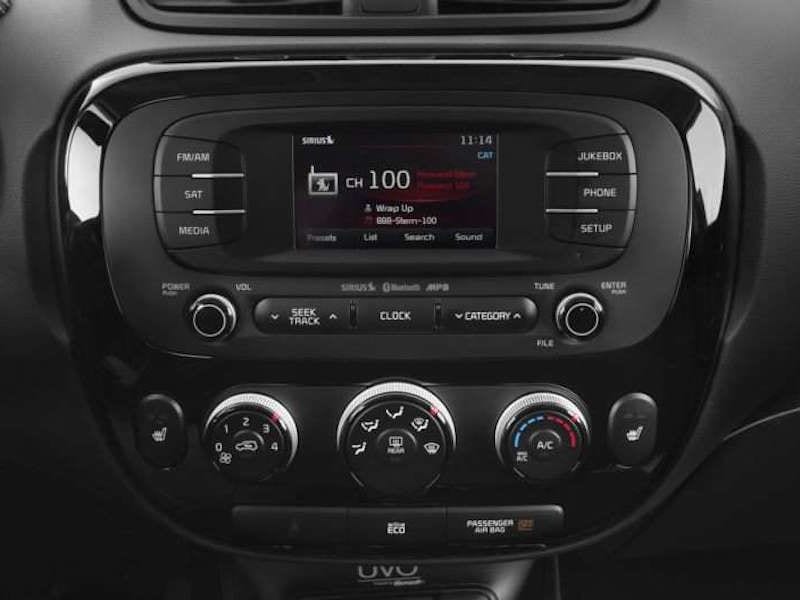
Kia Soul: The Last Box Standing
As you can tell, we are very fond of the Kia Soul. Not only does it stand out on the street with its boxy shape and bright colors, but it’s good to drive, offers great interior space for a small car, and the mid-level models deliver excellent value for the money. While we can lament the loss of other box-shaped offerings, the Soul proved to have staying power. You might even call it the last box standing.
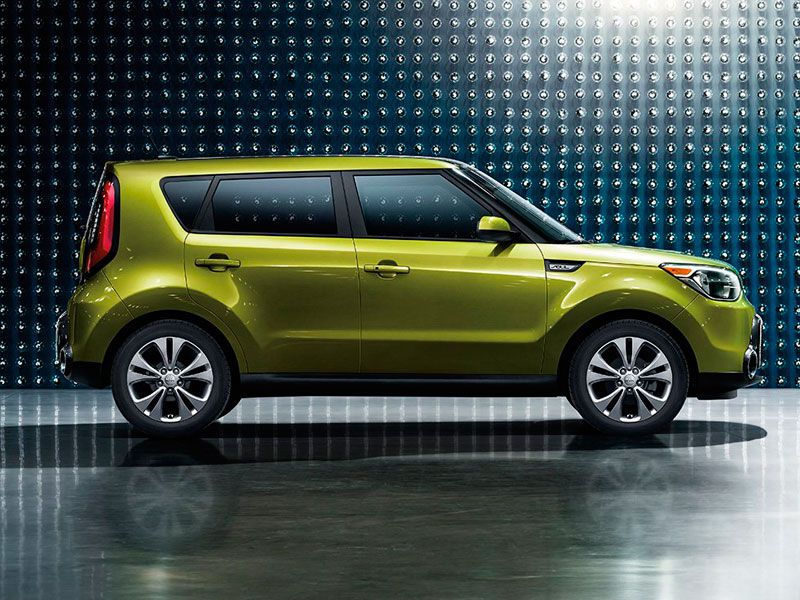
Photo by Kia